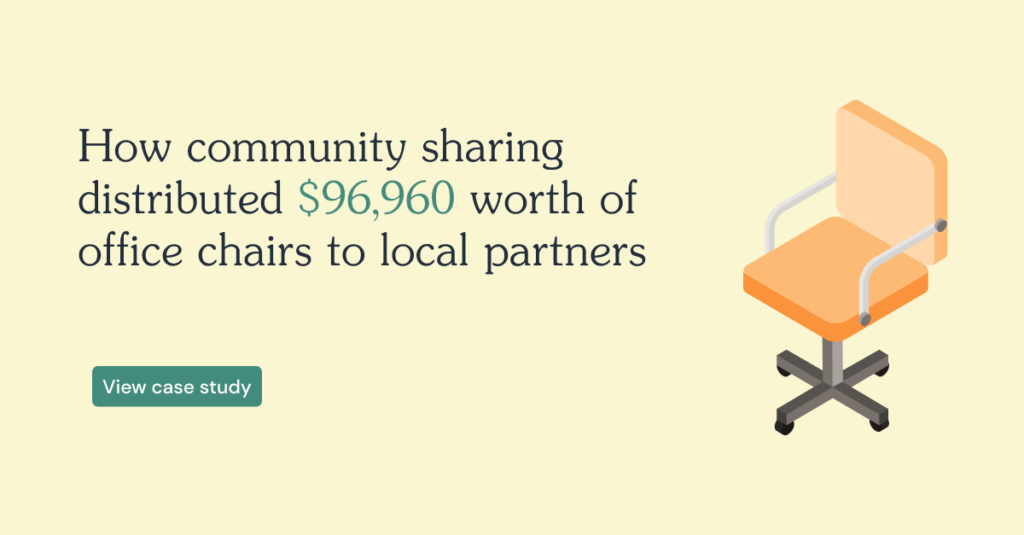Used Building Materials
Rheaply puts reuse on the table for every organization.
Used building materials
The construction industry is one of the most emissions intensive and wasteful industries. It’s responsible for 30-40% of total global greenhouse gas (GHG) emissions and construction waste is expected to increase up to 2.2 billion tons every year by 2025. Aside from negatively impacting the environment, this growth in waste comes with significant financial implications. Between tipping fees and raw material extraction costs, the construction industry spends billions of dollars annually on these expenses.
One of the best ways to address these issues is to leverage used building materials in new construction projects. Used building materials are items that are salvaged from other projects for use in new ones. Leveraging salvaged building materials can extend the life of a building. It’s more cost effective and less resource intensive than designing a new building from scratch, especially if materials are sourced locally.
Sharing assets within a local economy reduces shipping-related emissions and can even help establish a reuse-focused community. Plus, construction waste that is sent to landfill has generated about 6.6% of total GHG emissions since 2010 and is expected to increase as industrialization and urbanization grows. Prioritizing used building materials can help cut back on these emissions.
Aside from the environmental benefits, used building materials can reduce project costs. Current steel costs hover around $1,300 per ton so designing steel for reuse could generate up to 25% savings in material costs per ton of steel. Since the US uses 40 million tons of steel in building construction, total savings in steel production costs could reach $13 billion through reuse.
Quality is also an important consideration in choosing used building materials. To ensure that the existing structure will last as long as possible, the salvaged components must be high quality to maintain durability and eliminate toxicity over time. For example, remanufactured wood is less resource intensive but it doesn’t sacrifice quality, and it can be easily used for framing and finishing.
In order to actually source quality and local materials, designers and contractors need to understand what’s available and accessible to them. This is where markets for secondary materials can create new revenue streams and reduce supply-chain disruptions by making used or salvaged materials more readily available. Markets such as these allow the idle or unneeded assets of one organization to be utilized by another without the need for further virgin material extraction.
Where can I donate building materials near me?
One of the most challenging parts of optimizing used building materials is understanding who’s in the market for them. If you have leftover construction materials that you no longer have use for, who should you give them to? Here’s a few options of where you can donate or share your used or surplus building materials.
Lumber Salvage Yard
No matter where you are located in the United States, you’re likely to find lumber salvage yards near you that would be happy to collect your used wood. Many of these yards are dedicated to saving fallen trees. Lumber salvage yards in your area can be helpful in reusing wood to create masterful craftsmanship and rescuing materials that would otherwise be burned or wasted. One of the benefits of giving your materials to a lumber salvage yard is that you’ll earn some money. Plus, the yard is incentivized to turn a profit from the costs paid to you, so you can feel more confident that the materials you donate will end up being used in a future construction project.
Surplus Building Material Auctions
When government-owned property results in surplus materials, government agencies hold auctions to dispose of materials that they no longer need. While this is the bulk of where the auction materials come from, these auctions are still open for business. If you’re having difficulty finding lumber salvage yards in your area, you may be able to contact your local municipality and see if they are willing to leverage your used or surplus materials in their auction.
Rheaply Public Reuse Marketplace
Rheaply’s Public Reuse Marketplace, creates a collaborative network of businesses, organizations and entrepreneurs where one organization’s hard-to-recycle waste and by-products becomes another organization’s raw material. If you’re looking for a place to sell your used or surplus materials, a material exchange platform such as this can help you earn money and reduce waste while connecting to others in your community.

Free used building materials
The other challenging part of optimizing used building materials is understanding where to source them from. If you’re looking for salvaged materials, where do you go to find them? Here’s a few options of where you can find free used building materials.
Craigslist or Facebook Marketplace
Many people know that consumer platforms like Craigslist or Facebook Marketplace can help them find a plethora of used materials for free. While these platforms may be familiar and accessible, assessing quality is not an easy feat. Fraud or scams can occur and little recourse is provided, so while these platforms are always an option, we advise you to be careful.
Local contractors
A local contractor could be a perfect place to find used building materials. Reach out and develop a relationship. Many contractors have surplus or idle used building materials they may be willing to part with for free. Materials like paint and tile that were purchased for a specific project are sent to a landfill if they are not worth keeping around for future projects. This is a great opportunity to take these materials off the contractor’s hands and into your own construction project.
Rheaply Public Marketplace
The Rheaply Public Reuse Marketplace is home to thousands of items across half a dozen states and territories in North America. While manufacturers, government agencies, and businesses use this platform to sell items, there are still plenty that users are looking to part with for free. Users give away their items for free in order to divert waste from landfills, produce significant energy savings, and create new jobs and business opportunities for projects in their communities.


